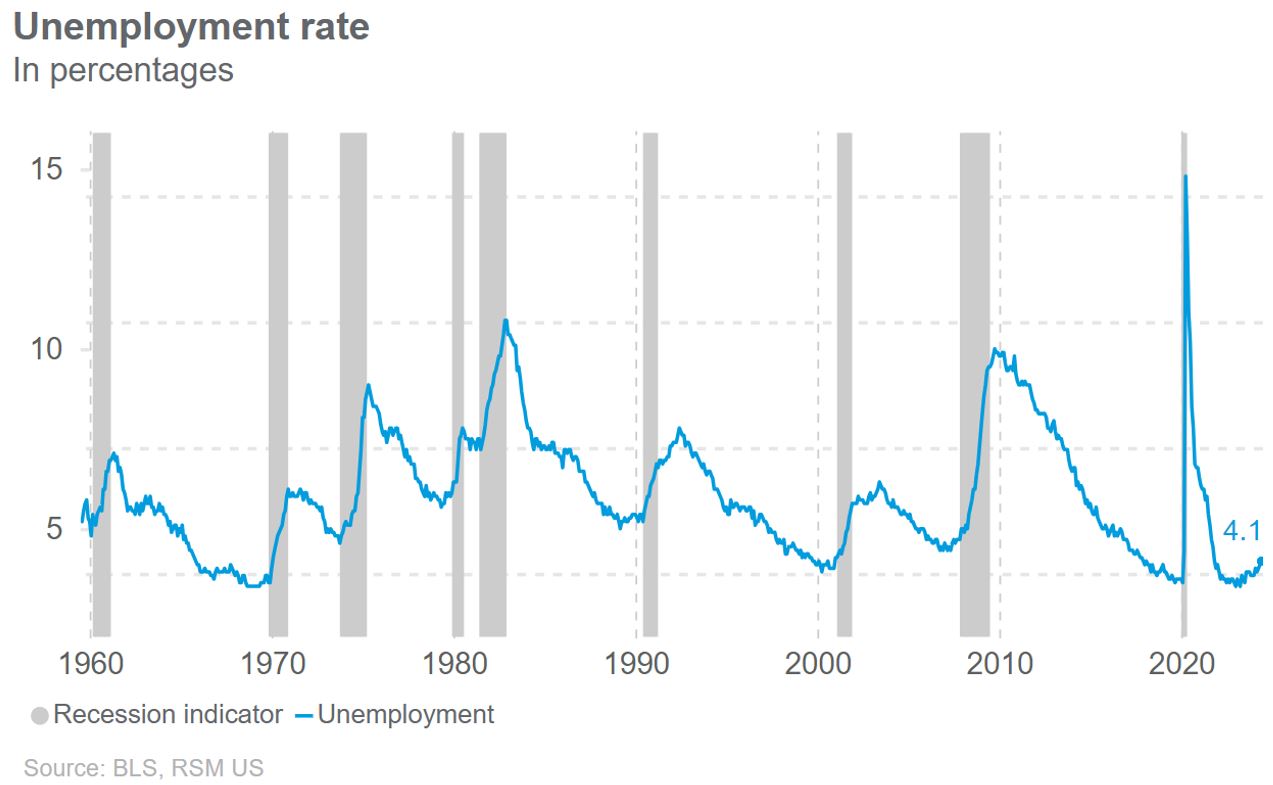Even after adjusting for striking GM workers returning to the workforce, labor market dynamics remain robust as the private sector generated 254,000 new jobs in November, fueled by a gain of 206,000 private service sector jobs. Total jobs…
Jobs
U.S. July employment report to show a gain of 200,000 jobs

Our provisional forecast for the July jobs report when it is released on Friday implies a net increase in total employment of 200,000 jobs with an easing in the unemployment rate from 4.1% to 4%.
We forecast a 0.2% increase in average hourly earnings, which should translate to a 3.7% year-ago increase.
In addition, we forecast a 0.2% increase in average hourly earnings, which should translate to a 3.7% year-ago increase.
The major swing factor in the report is likely to be seasonal hiring in the leisure and hospitality sector.
July always presents difficult seasonal adjustment challenges to the Bureau of Labor Statistics, and this year will prove no different.
Our look at seasonal jobs openings in the sector suggest a return to 2018-19 levels, so we are not anticipating an outsized increase in demand for seasonal workers.
If our forecast is erroneous then that would suggest the risk of a quicker pace of hiring in the top-line estimate.
The second, and more important, element of the jobs report will be the direction of the unemployment rate, which has been rising as more people, lured by rising wages, enter the workforce.
This dynamic is what economists refer to as a virtuous increase in unemployment and one that does not imply the economy is facing near term risk of a recession.
Following recent data on economic growth and inflation, we retain our view that there is only a 15% probability of a recession over the next 12 months absent any large shocks.
In addition, with much focus on the Sahm Rule or the idea that if the three-month rolling average of the unemployment rate over the previous 12 months increases by 0.5%, then it is likely that the U.S. economy will fall into recession.
Read more of RSM’s insights on the labor market, the economy and the middle market.
The Sahm Rule has been correct over the 13 recessions since World War II, so we are carefully monitoring the condition of the domestic labor market.
Still, we think that the domestic labor market dynamics following the shocks unleashed by the pandemic are likely to result in many rules of thumb, like the Sahm Rule, not valid as the economy moves through a large structural change.
We always considered the Sahm Rule more of a point of directional guidance for fiscal policymakers around the triggering of automatic stabilizers or in this case a reason to increase unemployment benefits rather than an always and everywhere rule for monetary policy.
We look forward to that discussion in the coming days, weeks and months.
Beyond those major topics, we expect hiring in state and local governments—mostly in education—as well as increases in private education, health care and professional business services to continue providing the foundation for solid gains in the American labor market.











